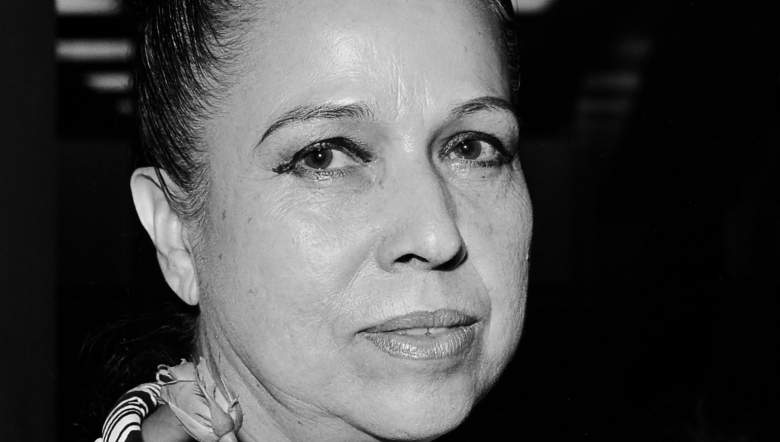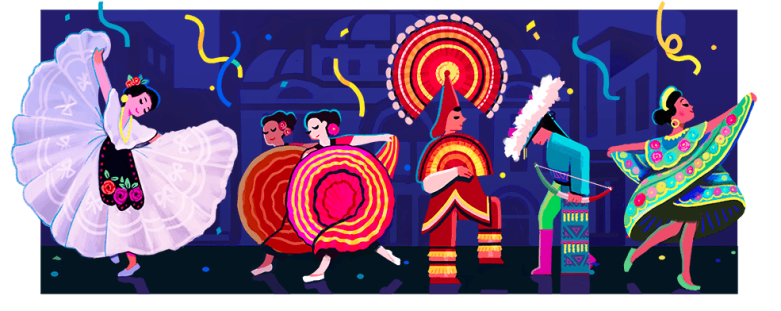
Wikimedia Commons Amalia Hernandez in 1973.
The 100th birthday of Amalia Hernandez is being celebrated on September 19, both by Google (through a Google Doodle) and also by admirers of Hernandez throughout Mexico and the world.
Who was Amalia Hernandez? Why was she important? Why is her 100th birthday being celebrated? She is considered one of the great historical ambassadors of Mexican culture, specifically its folkloric dancing tradition.
“Talking about #amaliahernandez, is talking about art, traditions, history in dance, passion and commitment…(it) is to talk about Mexico,” wrote the Ballet Folklorico de Mexico Facebook page on September 19, celebrating “a hundred years of the Mexican Culture Ambassador” and her “great legacy.”
Here’s what you need to know:
What She Founded

GoogleThe Amalia Hernandez Google Doodle.
Amalia Hernandez was the founder of the Ballet Folklorico de Mexico, which brought Mexican folkloric culture to the rest of the world, according to Google. The troupe focuses on stylistic interpretations of Mexican folkloric dance; its dancers wear elaborate, traditional costumes.
According to The Music Center, “Ballet Folklórico de México captures the heart and spirit of the Mexican people and their traditions through the pageantry and ritual of the indignous cultures before the arrival of the Spaniards. The company also depicts the influence of the Spanish and European cultures in creating a ‘Mestizo’ style.”
How It All Began
In 1952, Hernandez “founded the Ballet Folklorico de Mexico. Beginning with just eight dancers, the troupe grew to over three hundred in the years to follow,” according to Google. “The company performed on television for the first time in 1954, after which they were featured in a weekly broadcast. This success allowed Amalia’s group to tour North America and even represent Mexico in the Pan American Games in 1959.”
Amalia Hernandez once called Mexican culture a “concentration of the world’s art,” because European, African, and Indian influences mixed together.
According to Google, Amalia Hernandez “became a choreographer at the Fine Arts National Institute, where she taught modern dance. She then turned her focus to traditional Mexican folk dances. She combined these dances with more choreographed movements from her formal training, helping to create an entirely new style of dance known as baile folklorico.”
Why It Matters
The Ballet Folklorico de Mexico has reached millions of people, educating them about traditional Mexican culture but also about the culture’s complexity. As Google noted in the Google Doodle announcement, Hernandez is “remembered as an ambassador of Mexican culture whose legacy lives on through the Ballet Folklorico.”
Google noted that the Ballet Folklorico more than 22 million people have seen the troupe’s performances throughout the world. Brittanica reports that Hernandez led the Ballet Folklorico de Mexio to become “the largest and most widely respected Mexican dance company in the world. She choreographed more than 40 ballets that incorporated local dance traditions from some 60 regions of Mexico.”
Her Early Life
Hernandez was interested in performing and dance from childhood. Her love of dance dates to the age of 8 in stories of her life.
Hernandez was born in 1917, and, although she knew she wanted to be a dancer early on, she didn’t embrace folkloric tradition immediately. According to The Los Angeles Times, she was “born into a wealthy Mexican family,” and “began her career as a classically trained ballet dancer.”
The Los Angeles Times reported that she embraced a dancing career “despite the objections of her father, a prominent senator and rancher. Resigned to her choice, he brought great dancers to train her, including a principal from the legendary ballet star Anna Pavlova’s company and Nelsy Dambre of the Paris Opera.”
A biography of Hernandez says she found her emotional calling when she learned more about traditional Mexican dance.
“She tried Spanish flamenco and modern dance. She learned the basic steps, the formality, and the techniques, but not one type of dance was emotionally fulfilling despite her reputable teachers. She felt no connection to the foreign dances and music,” recounted The Adelante Movement. The site excerpted THE BOOK OF LATINA WOMEN: 150 VIDAS OF PASSION, STRENGTH, AND SUCCESS By Sylvia Mendoza. You can find it here.
This is where her heart lay, the site notes: “Hernández traveled throughout Mexico, to the mountainsides, the valleys, the little towns, the rural country, the coastline. She talked to people and explored each community’s culture. She heard her own native music and saw her own native dance in every corner she visited. And she felt a connection.”
Her Lasting Legacy
The legacy of Hernandez work still lives on even though she died in 2000.
“The Ballet Folklorico de Mexico still performs to this day. Since its inception, the group has danced for more than 22 million people. Hernandez remained involved with the company until her death in 2000, working alongside her daughters and grandson,” Google reported.
Time Magazine reported that “Hernandez remained deeply involved in the dance company all her life, until her death in 2000 at age 83.”